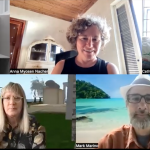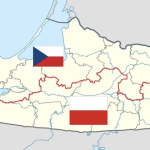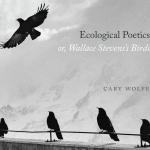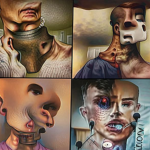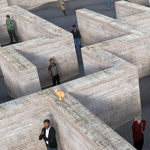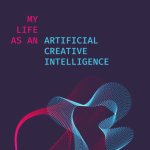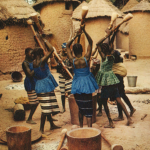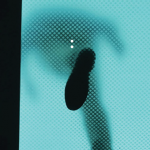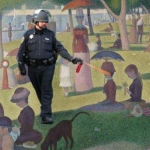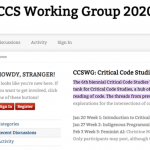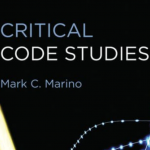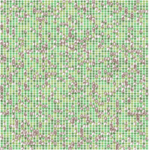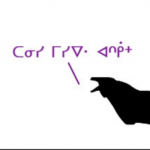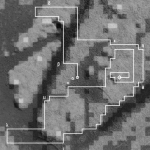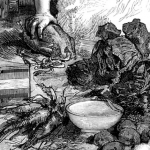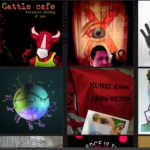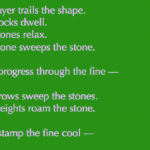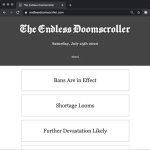2022
Anna Nacher chats with Mark Marino, Cathy Podeszwa, Joellyn Rock, and Rob Wittig—artists, designers, and new media theorists all—to discuss the impetus and impact of their long-running netprov collaborations (communal and improvisational creative writing conducted online). Interview conducted October 2022.
Anna Nacher explores the emergence and spread of the viral hashtag "Kralovec," a satirical Czech language meme protesting the Russian annexation of Ukrainian territory in September 2022. In discussing the social and political impact of memes as collaborative sites of making meaning through media, Nacher analyzes the "creative frenzy" that emerges when protest becomes memetic.
What Mario Aquilina and Ivan Callus accomplished in their "13 Ways of Looking at Electronic Literature", Lisa Swanstrom does for Ecocriticism. Taking as her starting point, Cary Wolfe's book on Wallace Stevens, Swanstrom explores each and every one of Stevens's "13 Ways of Looking at a Blackbird." What emerges, alongside Wolfe's ecocriticism is a resurgence, in literary studies, of the art of close reading.
Melinda M. White's itinerary through the iDMA 2022 Weird Media Exhibition in Winona consider the various forms of weirdness or strangeness evoked by the exhibited works. She explores how strangeness characterises human relationship to constantly transforming technologies, how it manifests itself in our difficult pasts, and how it points to alternative of unexpected futures. While the weird encounters with the exhibition works in no way point to a single, unifying thread or approach to the theme, White's account reveals shared concerns, tendencies, and connections among them. Temporal distance and experiences of loss render familiar technologies, objects, or places unfamiliar; the borders between human and non-human entities and perspectives is blurred or even discarded; humor and surreal irreverence are employed to raise urgent questions on ecology, ethics, and individual or collective narratives and subjectivities.
Mariusz Pisarski takes us on a detailed tour through the cognitive intricacies of hypertext classic Victory Garden's migration from Storyspace (circa 1992) to the Web. In so doing, Pisarski observes how years of Stuart Moulthrop’s experience as a mentor and teacher of digital literature, and as a practicing hypertext scholar and writer, are built into the anniversary edition of Victory Garden.
"I too am a psychic automaton." Mark Amerika, a founding publisher of ebr, shares the onto-operational sources of his (capital C) Creativity with ebr editor Will Luers.
In a series of interviews led in February and March 2021, Nacher, Pold and Rettberg examined how contemporary digital art and electronic literature responded to the pandemic. Their project on COVID and electronic literature was funded by DARIAH-EU and resulted in the exhibition prepared for the ELO 2021 Conference & Festival and the documentary film that premiered in June 2021 at the Oslo Poesiefilm Festival. xtine burrough is one of the creators of 13 works that were interviewed for the project. She generously shares her thoughts on life and creativity, collapsing spaces and the meaning of a domestic art practice during the pandemic.
Where Tomasula (in his own words) makes “no attempt to historicize the field,” preferring to offer “a snapshot” of a vibrant body of conceptual literary art, Gonzalez in this review arrogates the position Tomasula passes on, and proposes that the many texts in Tomasula's "immensely rewarding" anthology continue in the spirit of postmodern literary forms and show the continuing potency of the postmodern toolbox.
After having lived through three generations of electronic literature, and having experienced pre-web, web, and post-web literary periods, Will Luers takes a step back and advocates an "independent digital culture" in which literary artists might explore "a reality between language and the ineffable (be it artistic, religious or secular)." A mixture of technics and magics, we may be approaching a fourth generation of e-lit that is closer to pre-industrial folklore than it is to our present, technically managed space for individual and collective "creativity."
Jeremy Douglass and Mark C. Marino reflect on the activities of the Critical Code Studies (CCS) Working Group 2020.
Mark C. Marino and Jeremy Douglass discuss the field of Critical Code Studies (CCS) and introduce three reports about the discussions of the CCS Working Group 2020.
Meredith Finkelstein surveys key methodological aims of CCS, and considers the ways attending to code can enrich understanding of digital works, looking specifically at digital artist and programmer Eugenio Tisselli’s code for Amazon.html
Patricia Silva explores the impact of Google’s Search algorithm on BIPOC and queer cultures and highlights the iconoclastic work of the Feminist.AI collective, a community of academics, artists, and designers who seek to empower people with ethical ways to store, use, and search information.
Kalila Shapiro discusses the problematic supremacy of English in global programming, and explores ways that Indigenous programming languages, including Jon Corbett’s Cree#, have sought to break down this “cultural coding barrier”
In this article, Richard Carter outlines an ongoing critical and creative engagement in electronic literature, digital sensing, and ecological concerns. Like many who are now publishing critical and creative works together (particularly in The Digital Review), Carter situates his practices in a set of entangled disciplines, and then discusses his developing project Landform.
While Gastropoetics is a marginal practice, these culinary experiments explore the relational dynamics of cooking, hospitality, and eating as persistent humanistic practices, even as such practices are increasingly mediated by "food selfies" and other emerging, performative taste practices. Key to understanding the appeal of gastropoetics is the ad hoc nature of human production and consumption (see de Certeau's "everyday life") performed under the constraints of the generated menu, of the platform, and of the mnemotechnical system itself.
While presenting a series of four selected E-Lit artworks, Marques and Gago demonstrate how our recent pandemic will affect new media art, similarly to the ways in which the Athens Plague affected the writing (and reception) of Greek tragedies. And the same goes for Cinema and Aids, smallpox and illustration, photography and the third bubonic plague, usw.
Dani Spinosa reflects on the relocation of e-Lit scholarship and pedagogy "in the remote classroom for the precariat writ large."
As a follow up to the series of interviews with Ben Grosser in February and March 2021 (published later that year in ebr), we include here a more settled, post-pandemic set of reflections. In the interviews, Grosser noted how "the realities of the pandemic necessitated back then," and maybe still does, "a degree of vigilance about new information": is there anything new that we need to know? The flood of information, however, has been less about knowing and acting on that knowledge than it is about keeping us engaged, and returning us daily, hourly, and minute by minute to our digital doomscrolls. For this newly produced populace that is largely stuck online, Grosser here discusses a net art / e-lit project of his own, an alternative software interface called The Endless Doomscroller.
A critical encounter with one of alt-lit (alternative literature) movement’s most renowned contributors, whose moment (like many in this scene) has passed. Citing Christian Howard, Leah Henrickson advances the argument that “[w]e’re at a turning point in literary studies, and we need to confront how the changes in mode are affecting – and are affected by – the alternative networks of circulation within these digital spaces.”
